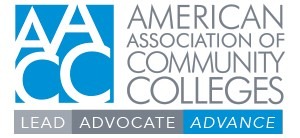Registered apprenticeships are evolving beyond traditional trades to include high-growth sectors such as electric vehicle (EV) manufacturing, battery technology, charging infrastructure, and clean energy. As federal and state investments accelerate the transition to EVs, community colleges must align apprenticeship programs with emerging industry demands to support workforce development in this rapidly expanding sector.
The Role of Employers in EV Apprenticeship Programs
Employer engagement is critical for the success of EV-related apprenticeships. Automotive manufacturers, battery production facilities, EV charging infrastructure companies, and utility providers all require skilled workers to meet growing industry demands. Without employer partners, apprenticeships cannot provide on-the-job training or align with industry standards. Colleges must proactively engage EV manufacturers, supply chain partners, and service providers to ensure apprenticeship programs align with the evolving skills required in the sector.
Key Stakeholders in EV Workforce Development
To build sustainable and impactful EV apprenticeships, colleges must collaborate with a broad network of stakeholders, including:
Secondary Schools: They provide a potential pipeline for future apprenticeships by introducing students to EV-related career pathways and the opportunity to host dual-credit youth apprenticeships and pre-apprenticeship programs.
Veterans Programs: Veterans come with prior training and experience in related fields, including roles with mechanical, electrical, and engineering expertise; leveraging programs that support veterans can help add experience to your pool of apprentice candidates and integrate a sense of community into your programs.
Non-Profit and Workforce Organizations: Local non-profits and workforce organizations play a vital role in expanding access to EV-related workforce training programs. Beyond outreach and recruitment, non-profits offer holistic, wrap-around supports—such as transportation assistance, childcare, case management, and financial coaching—that help participants not only enroll but successfully complete their training. Their deep community connections and trust-building efforts also ensure that opportunities reach those who stand to benefit the most, fostering a more inclusive and sustainable workforce pipeline.
Industry Associations and Trade Groups: Whether at the national, state, or regional level, associations provide a platform to help develop and disseminate information to partners with shared goals to support sector workforce goals. In addition, associations can be great partners to help determine industry or regional trends that may impact your RA program.
Policy Makers: Federal and state policymakers are investing heavily in EV workforce training. Colleges should engage with legislators to secure funding, incentives, and workforce grants for apprenticeship expansion.
Chambers of Commerce and Local Business Leaders: These groups have deep connections with regional businesses investing in EV technology and can help colleges build employer partnerships.
Workforce Development Boards/WIOA: This critical partner provides a pipeline of potential candidates and has resources to support initiatives, braid funding, provide marketing expertise, and support/manage employer relations.
State Apprenticeship Agencies (SAA) or federal Office of Apprenticeships, and regional and state DOL representatives: These federal/state entities can provide funding opportunities and are critical in setting standards, policies, and procedures that your RA program will need to follow.
Mobilizing the Community for EV Workforce Development
Community colleges can play a role in community mobilization by reaching out to industry stakeholders and creating partnerships that focus on pressing workforce issues. Colleges have the ability at the leadership level to reach out and elevate the perception of apprenticeships, provide technical assistance for the design and implementing of effective career pathways, and provide comprehensive competency-based curricula.
Many college executives already are involved on their local workforce boards that are represented by the organizations listed above. Colleges need to demonstrate the value of apprenticeships to other community leaders and the value they will bring to meeting the community and state workforce needs.
